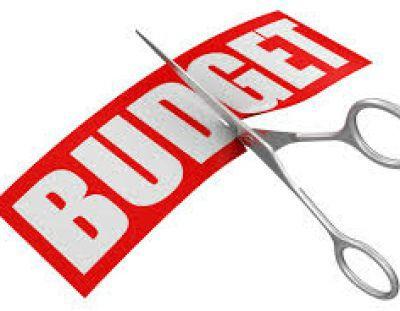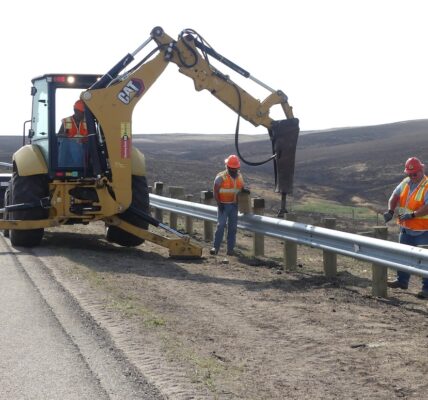By Nick Reynolds and Camille Erickson
Casper Star-Tribune
Via- Wyoming News Exchange
CASPER — After a surprisingly busy summer tourism season and hundreds of millions of dollars in budget cuts already announced, the Wyoming Legislature now faces just under a quarter of a billion dollars in funds to make up from what was once a $1.5 billion shortfall for the coming year, according to a Monday report by the Consensus Revenue Estimating Group.
However, state leaders, including Gov. Mark Gordon himself, paired that number with the acknowledgement that the state’s current fiscal situation is not a sustainable one and will likely require new revenues — or a significant reimagining of government — to break even in the future, particularly with numerous other cuts on the horizon and a darkening outlook for Wyoming’s energy sector.
The state’s economy has fared better than expected under the COVID-19 pandemic, Gordon told members of the Joint Appropriations Committee Monday morning. Sales tax revenues have overperformed, while most areas of the economy — minus trona — have performed at or better than the expectations levied on them in the group’s most recent report in May.
In all, the current Consensus Revenue Estimating Group (CREG) report shows an increase in general fund revenue of $95.6 million (5.3%) compared to the May 2020 CREG forecast, a significant impact Gordon said will help the state avert some of the more draconian cuts to state agencies that were previously anticipated. Higher-than-expected revenues have bolstered Wyoming’s school foundation accounts as well, improving the deficit from $515 million under May’s forecast to $310 million today.
Altogether, the overall revenue forecast before cuts show a shortfall of more than $750 million between the state’s general fund and school foundation account, roughly half of previous projections.
However the crisis — while milder than expected — has still proven devastating and has only exacerbated economic problems that existed before the pandemic hit.
Though sales tax revenues were unexpectedly high through the summer, Gordon’s presentation comes at a time when Wyoming has fewer than one-tenth of the number of oil rigs working than it did at this time last year and days after one of its largest coal companies, Arch Coal, announced it would be reducing production at its two Wyoming thermal coal mines by 50% in the next two to three years.
This is not simply a downturn, Gordon noted, comparing Wyoming’s financial situation to a scene from an “Indiana Jones” movie in which a tank’s controls is jammed, sending it toward a cliff with no way to stop. Paired with a weakened stock market, Wyoming stands poised to cut even more from its budget this year, Gordon said, even after four straight years of cuts that have reduced Wyoming’s budget nearly by half.
Without serious reform, those cuts would likely only continue, or Wyoming risks becoming a place where businesses languish, he said — a destination for “parasites,” rather than contributing members to Wyoming’s economy.
“This ticking time bomb cannot be easily defused,” Gordon said. “And yet that is what we need to do in the coming years.”
The immediate concern to Wyoming’s budget has already been made clear. To date, Gordon’s office has already managed to cut roughly 10% of the state’s budget, with additional cuts up to 20% anticipated in the months to come. While the state has ample savings to cover the gap, Gordon said that such a policy would not be fiscally prudent, and that he has “no interest in building a budget just for next year.”
To be successful, Wyoming, he said, “must live within her means, and structure herself for economic opportunity” by not only being able to provide a level of service necessary to attract businesses, but to retain the accomplishments made in Washington on issues like state primacy over some federal lands and the right to manage — wildlife all of which cost significant amounts of money.
It is worth noting that many of the savings made this year — freezing hiring for state jobs, for example, and other stop-gap measures — are unsustainable. Many of the savings outlined in CREG’s projections were one-time cuts, meaning that funding the state’s operations moving forward will actually require the Legislature to identify approximately $300 to $500 million in new revenues to balance after the coming biennium, Joint Appropriations Committee Co-chair Rep. Bob Nicholas, R-Cheyenne, noted.
“It’s not as rosy as things would seem,” he said. “The picture has to be as accurate as we can make it to have these conversations moving forward.”
Ultimately, Gordon said, the Legislature will need to define what levels of government services their constituents will be willing to accept. However, he cautioned lawmakers from making decisions now that will hurt Wyoming in the long run and affect its ability to bounce back after the pandemic.
According to Don Richards, Wyoming’s Budget and Fiscal Administrator and Consensus Revenue Estimating Group co-chairman, Wyoming’s oil industry is not expected to have any net, new production of oil until 2022, while royalties from coal are unlikely to match a one-time increase in new revenues seen as a result of decreased competition into the 2021 fiscal year.
Bouncing back, Gordon said, will require immediate action from the Legislature itself.
“Doing nothing will condemn us to a slow, painful decline as we wait for the next boom Wyoming always seems to hope for,” Gordon said.
While Wyoming’s current budget shortfall is much improved from initial projections in May, many agencies across state government are still working on outlining what are expected to be a series of devastating cuts ahead of the Joint Appropriation Committee’s preliminary budget discussions in December.
As of Monday’s hearing, the University of Wyoming had yet to approve a series of programmatic changes to its budget, with the full process of vetting the entire scope of their proposed cuts with the faculty senate not expected to be completed until December, President Ed Seidel told lawmakers Monday. Meanwhile, some state agencies, like the secretary of state’s office, will require some statutory reforms to implement their cuts. Reducing nearly $90,000 in mandatory mailings, for example, would require a statutory change that is currently working its way through the Joint Committee on Corporations, Elections and Political Subdivisions.
Others know exactly what’s coming: The state’s community colleges have already decided that they would likely need to lay off dozens of employees at each institution to break even, college presidents told lawmakers Monday, with many of them considering whether it would be better to cut janitorial or public safety staff than it would be to reduce programming that would have a detrimental impact on their ability to host similar levels of programming in the future. Even the state’s criminal justice system, which has already been hobbled by a massive backlog of cases because of COVID-19, is feeling the crunch: In Natrona County, District Attorney Dan Itzen told members of the Joint Judiciary Committee on Monday afternoon that budget cuts have put an extensive strain on his already underfunded office, saying that Casper and the county writ large has seen a substantial uptick in crimes and fewer resources to process them.
The court, Itzen said, is now sending his office paper clips in an effort not to waste them, while the local sheriff’s office has already been furnishing their office with used office furniture. Losing personnel, he said, would only cause even greater issues.
“This is where we are,” he said. “When we start losing bodies, we simply can’t keep up.”
That level of uncertainty has already caused some friction. In testimony with lawmakers, Joe Schaffer, the president of Laramie County Community College, said he was frustrated in some of the conversations taking place in the Legislature seem only to be focused on how to balance the budget under the status quo, rather than looking at providing levels of service the state should aspire to.
“We are now allowing budget cuts to dictate our system of higher education,” he said.







